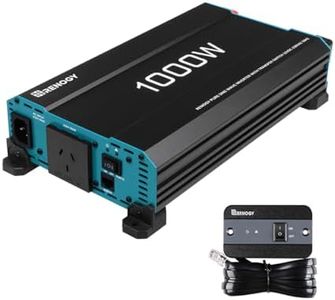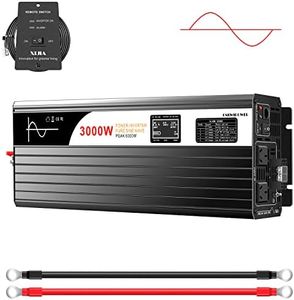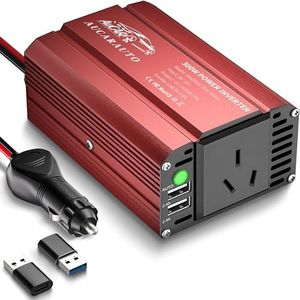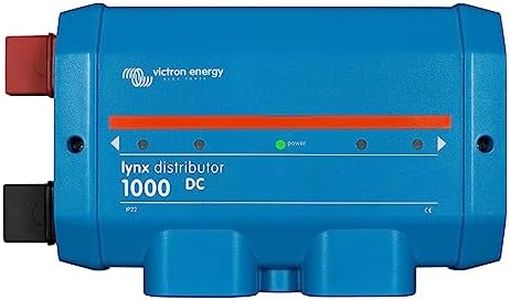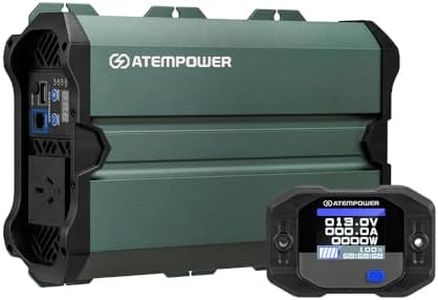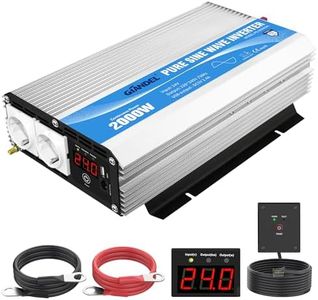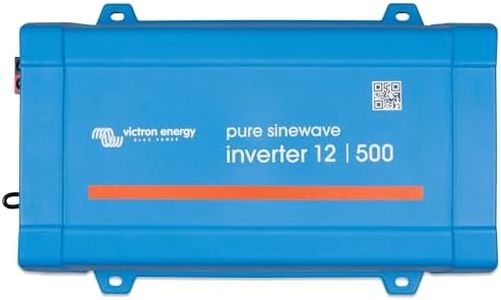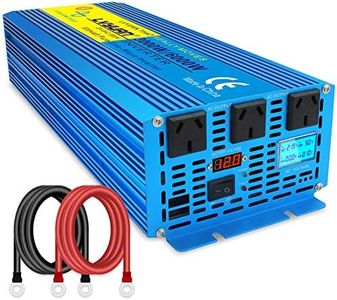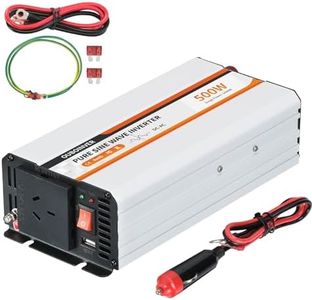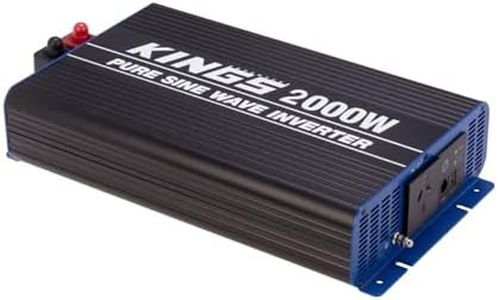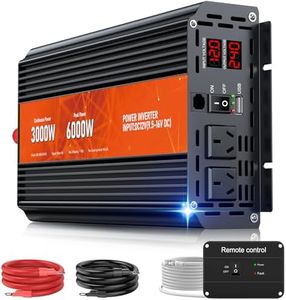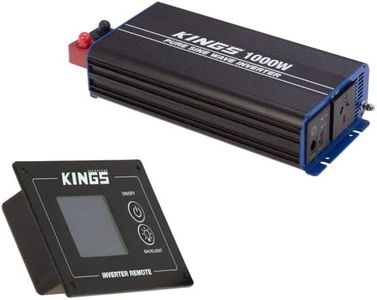We Use CookiesWe use cookies to enhance the security, performance,
functionality and for analytical and promotional activities. By continuing to browse this site you
are agreeing to our privacy policy
10 Best Power Inverters
From leading brands and best sellers available on the web.By clicking on a link to a third party's website, log data is shared with that third party.
Buying Guide for the Best Power Inverters
Choosing a power inverter can seem a bit confusing at first, but with the right approach, you can easily find one that meets your needs. A power inverter changes DC (like from a car battery) into AC (like what you use in your home), allowing you to run household electronics from your car, RV, or solar setup. Start by thinking about what devices you'll want to power, how many you'll use at the same time, and how portable or permanent your setup needs to be. Keep safety and compatibility in mind, and read product manuals carefully to understand safe operation.Wattage CapacityWattage capacity tells you how much power the inverter can handle at a time. This is important because every device you plug into the inverter will use up some of these watts. Inverters come in low (around 100-500 watts), medium (600-1500 watts), and high (2000+ watts) capacities. If you just want to charge phones or laptops, a low-capacity inverter will do. For running small kitchen appliances or power tools, you'll need something in the medium range. For large appliances or multiple devices at once, go high. Always add up the wattage of your planned devices and choose an inverter with a little extra to avoid overloading.
Input VoltageInput voltage is the kind of voltage the inverter expects from the battery or power source—usually 12V or 24V DC for cars, RVs, or solar setups. It’s essential because using the wrong voltage can damage both the inverter and your devices. Most car-based systems use 12V, while larger solar or RV setups sometimes use 24V. Check your power source before picking, and match the inverter's input voltage for safe, efficient use.
Waveform Type (Pure Sine Wave vs Modified Sine Wave)Waveform type refers to the quality of the AC output produced. Pure sine wave inverters make electricity just like the grid—smooth and safe for any device. Modified sine wave inverters have a choppier output, which can run many devices, but can cause issues with sensitive electronics, motors, or audio equipment (like sound or heat). If you need to run delicate devices or things with motors, aim for a pure sine wave inverter. For simple devices like lights or basic chargers, modified will suffice.
Number and Type of OutletsThis spec tells you how many devices you can plug in at once and whether the outlets match what your device needs (USB, AC, or even DC ports). More outlets mean more flexibility but also more load to manage. Look for inverters that offer the right mix for your gadgets—if you have lots of USB devices or multiple AC devices, make sure the inverter has enough outlets of each kind. Choose based on the types and number of devices you plan to power regularly.
Safety FeaturesSafety features like overload protection, short-circuit protection, and low-battery shutoff are there to guard your devices and the inverter itself. These features are critical for peace of mind—especially if you're powering expensive or sensitive gear. Look for these features in the product description and manual. If you plan to use the inverter often or for longer periods, prioritize a model with solid safety protections.
Portability and Mounting OptionsSome inverters are made to be lightweight and portable, great for car trips or camping, while others are meant for permanent installation in RVs, boats, or homes. This affects both the size and the way you install or carry the inverter. Decide how often and where you plan to use your inverter, and pick one that fits your needs, whether it’s easy to move around or designed to stay put.
Cooling and Noise LevelInverters generate heat when they work, and cooling fans help keep them safe. Some fans are quieter than others, and noise level can matter if you’ll be using the inverter in quiet environments (like a camper van or bedroom). Check for information on whether the fan runs all the time or only when needed, and how loud it is. If silence is golden for you, look for models known for quiet or smart cooling.


